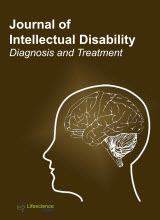jiddt
|
|
Abstract: Objective: The article researches the essence and bases of functioning and development of the consciousness (conscious level of the human psyche) in the context of the psychic and energetic conception of the psyche and psychic. Background: There are thousands of writings about consciousness. However, operational and functional processes of conscious perception of the world and self, understanding of various connections in this world, determining of attitude to it and self and forming responsibilities for results of interaction are described unclearly almost in all psychological conceptions. Method: To disclose the human consciousness, the following methods were used: analysis, synthesis, comparison, abstraction, generalisation and grouping of existing knowledge about a human, functioning of the human psyche. Results: It has been proved that the conscious is the plurality of different psychic, about which human is aware. We have found out that the personal unconscious contains phenomena that are in the subconscious, not in the unconscious because "came" from consciousness. Conclusion: This plurality is the basis of forming psy-programs of different degree of complication and perfection to transform the world as external psyche through activity, behaviour, their comparison with previous experience, isolation of "Self" from the environment to analyse it and consciousness from different perspectives. Keywords: Conscious level of the human psyche, awareness, psy-programs, psy-operations, fixed settings.
|
|
|
Abstract: Introduction: nowadays, one of the remarkable issues in dentistry is jaw growth pattern and tooth and mouth conditions (oral conditions) on patients’ quality of life and daily activities. This study was done to evaluate skeletal malocclusion effect on the quality of life and oral health in Ahvaz. Results: there is not any significant difference between average quality of life of people with Cl III and Cl II skeletal (p=0.761), but there is a meaningful relation between Cl II skeletal and normal skeletal groups and also between Cl III skeletal and normal skeletal groups (p<0.001). Keywords: Oral health, quality of life, skeletal malocclusion.
|
|
|
Abstract: Intellectual disability (ID) is characterized by significant limitations in intellectual and adaptive functioning emerging before the age of eighteen-years-old. Known as a pervasive developmental disorder, the disability disturbs the individual's functioning on a wide range of cognitive and social realms, which further result in failure at school and interpersonal relationships. Nonetheless, the capacity for emotion regulation (ER) serves as a key role in supporting the individual's adaptation despite having a disability. Researches have found that ER can be taught as a skill for those with ID, specifically using Dialectical Behavior Therapy’s (DBT) skill training as the basis for the program. Therefore, this study aims to examine further the application of this DBT program and its effectiveness in enhancing ER skills. The programs were delivered to three participants of adolescent aged (9-17 years old) in Indonesia, each having a moderate ID, mild ID, and borderline intellectual functioning (BIF). Using a single case study design (A-B-A procedure) where participants' ER skills were measured before and after the program, these studies showed the program was effective. However, in terms of application, it is noteworthy to highlight the adjustments needed during the program's delivery, considering the degree of disability. These adjustments are found in the program sequences, modality used for the program, the evaluation method used to record the participants' improvements, and the degree of skills developed. This paper examines these variations in depth to shed light on the applicability of DBT's program as in improving ER for individuals with ID and BIF. Keywords: Borderline Intellectual Functioning, Dialectical Behavior Therapy, Emotion Regulation, Mild Intellectual Disability, Moderate Intellectual Disability.
|
|
|
Abstract: A cataract is an ocular complication of diabetes mellitus, and the risk of developing diabetic macular oedema (DME) increases in cataract surgery. This randomized, single-blind clinical trial study was conducted on 45 eyes (39 patients) with stable diabetic retinopathy with cataract to compare the efficacy of three therapeutic procedures in the prevention of DME after phacoemulsification through intraocular lens implantation. After cataract surgery by phacoemulsification, the patients were randomly assigned into three groups. The group A received 1.25 mg of intravitreal bevacizumab, and group B received a sub-tenon injection of 40 mg triamcinolone at the end of the surgery. The group C received topical diclofenac drops every 8h for four weeks after the surgery. Results showed there was no significant difference in the demographics and clinical features, central macular thickness, and systemic condition of the three groups at the beginning of the study. There was a significant difference between the preoperative and postoperative periods (i.e., three months after surgery) in the three groups regarding mean macular thickness; however, the difference among the three groups was not significant in the post-operative periods. The DME after cataract surgery occurred in 4 eyes (26.67%) in the diclofenac group and three eyes (20.00%) in the intravitreal bevacizumab and three eyes (20.00%) in sub-tenon triamcinolone groups. According to results, the administration of these three therapeutic procedures can be beneficial in the prevention of DME in patients with cataract and diabetic retinopathy. Keywords: Diabetic macular oedema, Diabetic retinopathy, Bevacizumab, Diclofenac, Triamcinolone.
|
|
|
|


